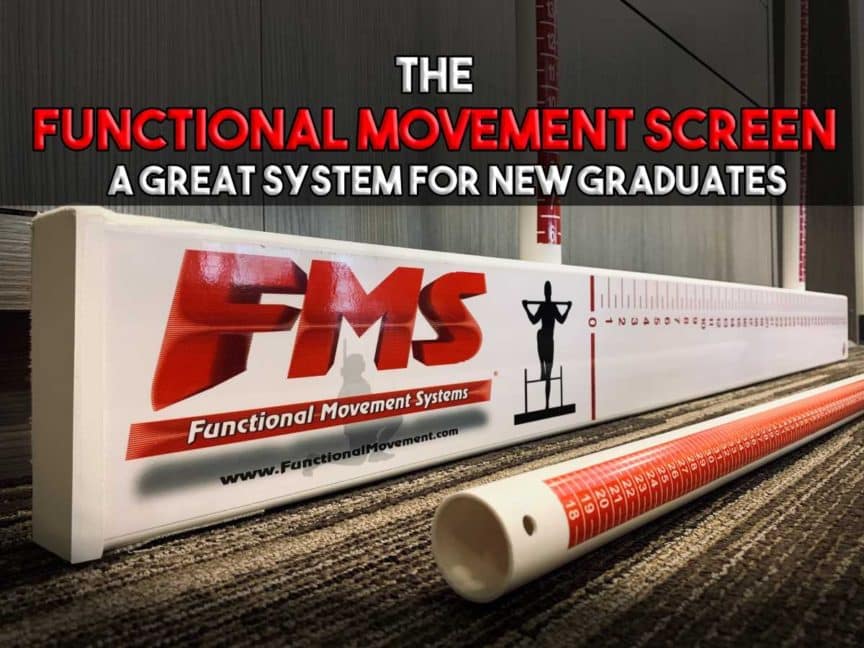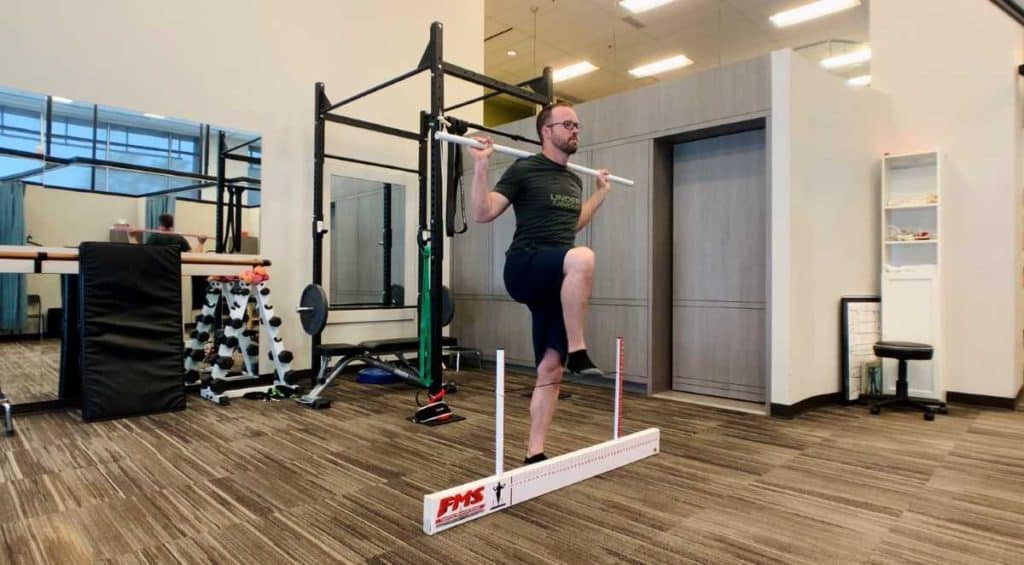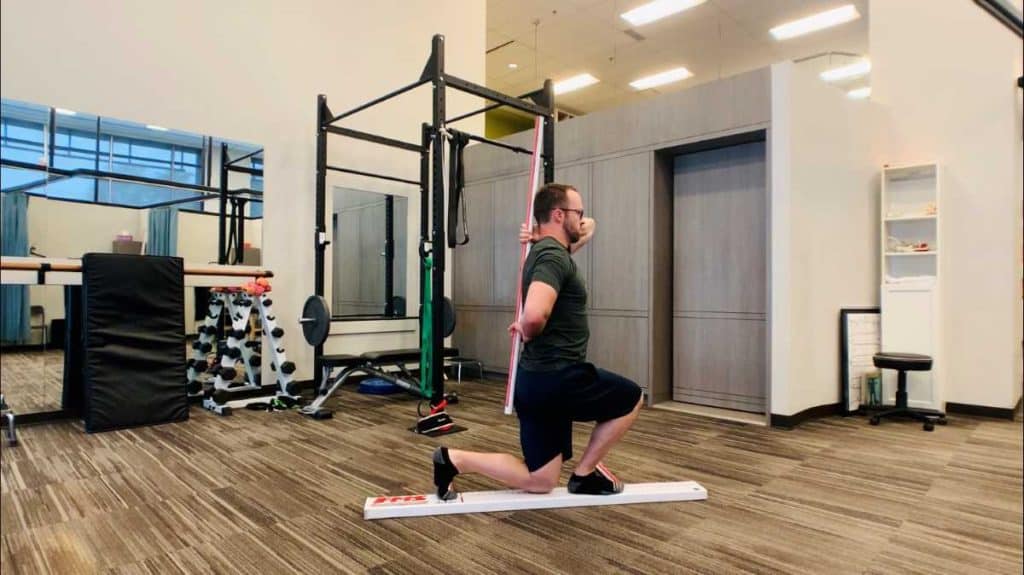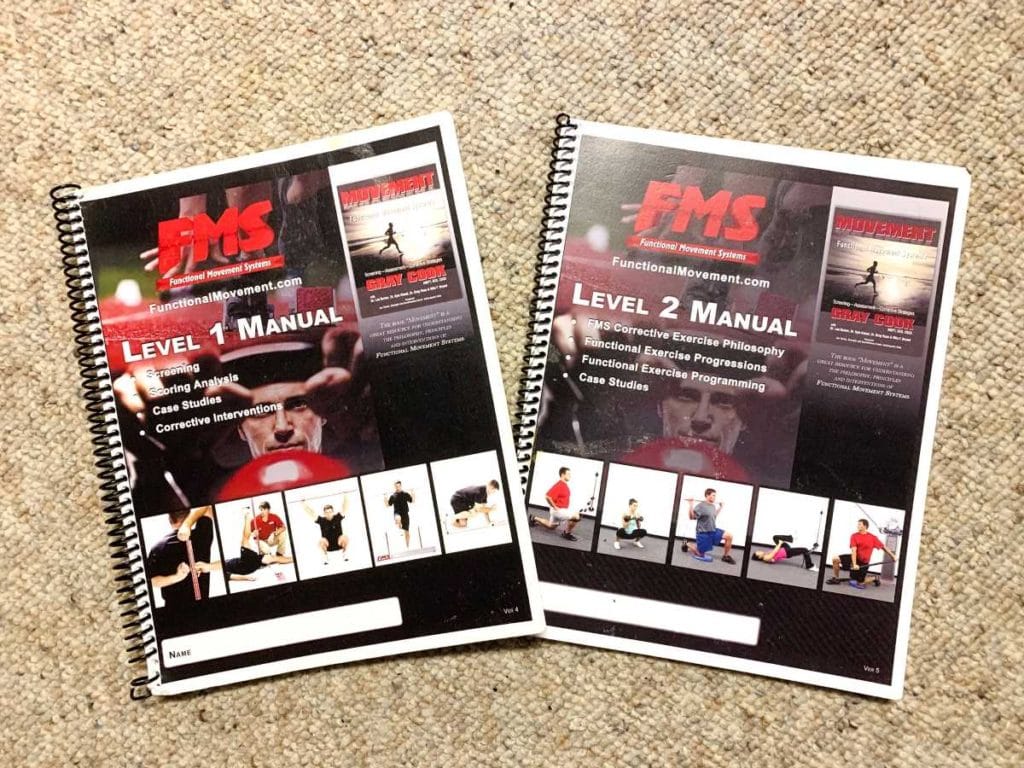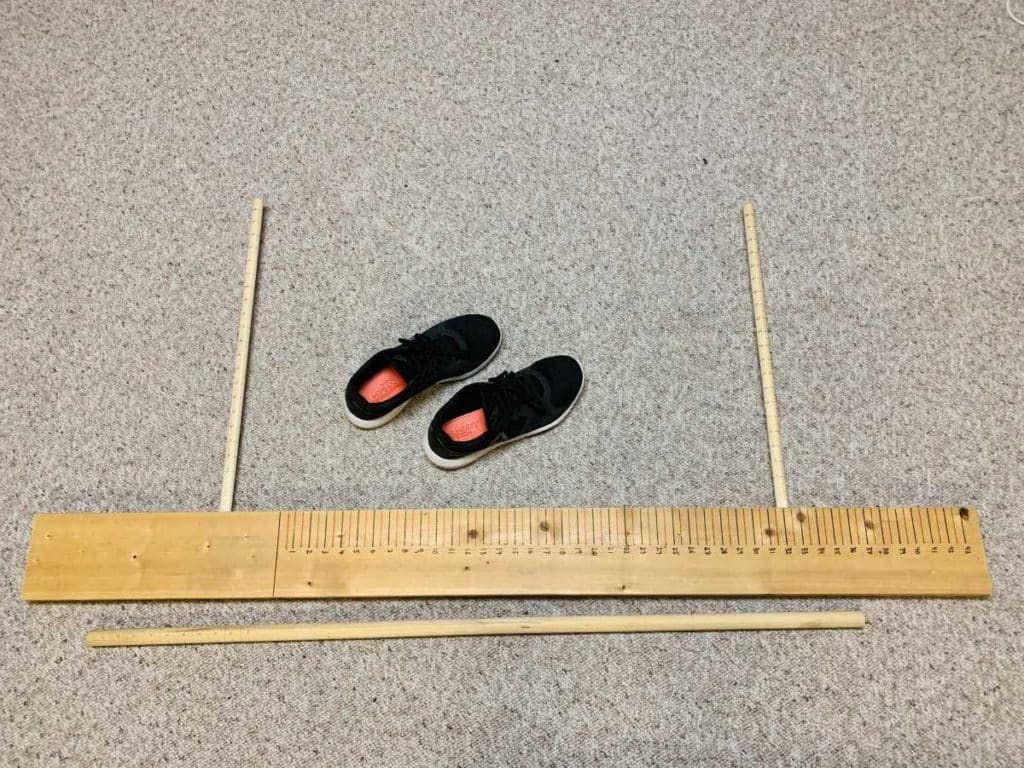The functional movement screen (FMS) is a great certification and system that I often encourage new PT graduates to pursue if they’re planning on working in outpatient-based orthopedics settings. There’s many reasons for this, which I will cover within this article.
The FMS is a great piece of arsenal for the recent PT graduate to have in their “toolkit”. It can help identify injury potential while simultaneously prioritizing and guiding treatment interventions for active, healthy patients who have global and regional movement-quality issues. It’s a great place to begin for the new grad who may feel lost on knowing how to assess an active patient with no overt injuries.
While the FMS will best serve those working in outpatient-based settings and treating those who are generally active and healthy, having a general understanding of the screen can benefit all PT’s. A general description of the screen and its parameters are covered below. Keep in mind that the FMS is a mere screening tool that serves as a “quick look under the hood” when it comes to assessing an individual; it will not determine exact cause of an individual’s movement dysfunction.
Article Overview
- What is the FMS and what does it do?
- What the FMS doesn’t do
- How the FMS works
- What are the seven movements that are screened?
- When should the FMS be used?
- Which populations are best served by the FMS?
- FMS certifications
- Concluding remarks
What is the FMS and what does it do?
The functional movement screen is exactly that – it’s a screening process consisting of seven different movements that aim to identify movements and patterns (and thus areas of the body) that are inadequate or dysfunctional. It is one of the many systems or tools that has been developed by the company Functional Movement Systems (link takes you to their site). The sole reason for screening these movements is to identify potential areas of injury that could be sustained by the individual if not addressed.
What the FMS doesn’t do
It’s important to know what the FMS has been designed for and what it HASN’T been designed for. Most importantly, anyone using the screen (along with anyone being screened) needs to be aware that the screen does not predict performance potential of an individual. An individual can in fact move poorly (and subsequently be at risk for physical injury) while still performing very well within their sport or movement-based activity due to the phenomenon of movement compensation strategies implemented by the body.
As well, the screen does not diagnose or place labels on what is causing the movement-based issue. Aside from inferring that reduced quality of movement is either due to a mobility-based, stability-based or motor control-based issue (all of which are non-specific), the screen does not provide diagnoses for any movement dysfunction.
If the individual performing the screen is a licensed healthcare practitioner, they can then use further examination methods, such as the FMS’s big-brother Selective Functional Movement Analysis (SFMA) (also by Functional Movement Systems) to further examine and treat the root cause(s) of the issue.
How the FMS Works
The seven movements within the screening process look at components of either mobility, stability or motor control for the individual. An ordinal scoring system (ranging from 0-3) is used to rate the quality of movement the person is able to achieve. Here is a quick scoring breakdown for each movement:
0: There is pain with the movement (this does not include basic stretching sensations)
1: the movement cannot be performed adequately even with a modification to the movement
2: The movement can be performed adequately, but with a specific modification to the movement
3: The movement can be performed adequately without any needed modification
What are the seven movements that are screened?
The seven movements that the screen utilizes are:
- The overhead deep squat
- The hurdle step
- The inline lunge
- The shoulder mobility screen
- The active straight-leg raise
- The trunk stability push-up
- The rotary stability test
Each one of these movements requires the individual to adhere to strict standards throughout the movement. When the standards can’t be met, a predetermined modification to the movement is then implemented and the movement is performed again.
When should the FMS be used?
Here’s where the brilliance of the screen takes center stage (in my personal opinion). For new graduates who can feel overwhelmed with complex assessment methods, or for PT’s who aren’t sure how to best assess an active patient who isn’t injured but simply isn’t moving all that well, the FMS can be a great starting point.
It is not intended to be a complicated system. In fact, the brilliance of the system is that it has acceptable inter-rater and intra-rater reliability due to it’s simplistic scoring system and evaluation criteria (1-3).
Once the practitioner becomes proficient with running the screen, a full screen can be performed in 20-30 minutes depending on the abilities of the individual being screened. This leaves a solid half-hour to work on implementing your plan of attack with the patient if you run the screen on an initial evaluation that lasts 60 minutes.
It’s possible that you’ll grow out of using the FMS as you gain and develop proficiency in your professional abilities, but you’ll have a great system in place if you ever want to quickly screen or evaluate individuals (such as a sports team) outside of the clinic. As long as you have an FMS kit (purchased or homemade), you’ll have all you’ll need.
I still use the FMS on many of my athletes who are looking to stay injury free or are at the return-to-play portion of their rehab after sustaining an injury that brought them into the clinic. Performing the screen can be done nearly anywhere and thus it’s easy to run a screen within the clinic, in a gym, at a sports field/arena, etc.
Which populations are best served by the FMS?
It’s important to understand that the FMS can be used for all ages and genders and that it has been designed for the more active demographic, predominately those who do not have major physical injuries or limitations. It is therefore an ideal tool to use on those who aren’t moving exceptionally well, yet do not have major pain or injury when doing so.
Thus, for these types of individuals the screen serves as a brilliant way to determine where the therapist should start looking/examining when determining which areas and movements of the body should be treated.
There is indeed a hierarchy of what should be prioritized for treatment/correction based on the deficiencies of each test/movement, which you will learn through the FMS certifications.
FMS certifications
When it comes to being certified by Functional Movement Systems for their Functional Movement Screen, there are a couple of things to note:
The FMS certification is open to anyone and therefore one does not have to be a licensed healthcare practitioner to take the course. This is the opposite for those wishing to take what I call the “big brother version” of the FMS, which is the SFMA (Selective Functional Movement Analysis).
Since the SMFA is much, much more in-depth and is designed to determine exact causes of dysfunction, one must be a licensed healthcare practitioner to take the SMFA courses.
You can likely pick up CEU’s for taking an FMS course (depending on one’s profession), and the cost of the course is quite reasonable, which weighs in favour of the new PT graduate who is likely still on a rather tight budget.
For the FMS, there are two levels of certification:
Level I: The level one certification involves learning about the uses of the FMS along with how to perform the screen itself. This is typically covered in a single day if taking the course in person (which is what I did back in 2014).
Level II: The level two certification involves learning Functional Movement Systems’ corrective exercises based on results of the individual’s movement screen. Aside from learning the corrective exercises one could choose to implement, it also covers learning the hierarchy for prioritizing which movement dysfunctions to treat. Again, it’s usually covered over the course of a day.
My thoughts on taking the FMS courses
Having done both my FMS levels back in 2014, I found that level II really gave me a lot of information that I was interested in. While learning the screen itself is indeed necessary, I felt that the strategy for determining how to prioritize dysfunctions and the respective corrective exercises were incredibly valuable. At the time, I was a personal trainer so my scope of practice was limited specifically to hands-off exercises. Even to this day, however, I still use many of their corrective exercises when need be.
Over the years, Functional Movement Systems has moved to the option of teaching the FMS courses online. Before the Covid-19 pandemic, I can’t say as I was a fan of the online teaching. While it is convenient (again, this is the pre Covid-19 era I’m referring to here), I feel like many individuals would miss out on the fine-details and experience one can only get when attending in person.
While it makes a lot more sense in the current Covid-19 era to take courses online, I would still strive for taking the course in person if it’s both safe AND feasible for you to do so. That’s just my own personal view.
Concluding remarks
Sometimes causes of mechanical pain and movement dysfunction aren’t so obvious. Even if they are, knowing how to prioritize multiple areas of dysfunction can be challenging – especially for the new graduate.
There are plenty of amazing systems and methods out there for determining movement quality and injury potential within active populations, and by no means am I saying that FMS is the only one. Every system has strengths and weakness as well as an ideal target population for which the system is best suited towards.
Personally, I find that the strengths of the FMS are in its simplicity and its proven inter-rater and intra-rater reliability. It’s just an overall great down-and-dirty way to assess injury potential and movement dysfunction within an active individual.
So, if you’re a new graduate who gets lost in complexity, having a simple system in place, such as the Functional Movement Screen can be a great way to simplify knowing how to best take care of your patient while identifying areas of the body that are a cause of concern regarding potential future injury.
Like anything else, every tool has a time and a place. It’s important to know when using the FMS may be a good idea as well as when it may not be. Additionally, it’s important to know that other screening and subsequent treatment tools can be great adjuncts to capitalizing on identifying and treating what the FMS reveals about the patient’s movement abilities and potential for injury.
Works Cited:
1. Moran RW, Schneiders AG, Major KM, Sullivan SJ. How reliable are Functional Movement Screening scores? A systematic review of rater reliability. Br J Sports Med. 2016;50(9):527–536.
2. Teyhen DS, Shaffer SW, Lorenson CL, et al. The functional movement screen: a reliability study. J Orthop Sports Phys Ther. 2012;42(6):530–540.
3. Cuchna JW, Hoch MC, Hoch JM. The interrater and intrarater reliability of the functional movement screen: a systematic review with meta-analysis. Phys Ther Sport. 2016;19:57–65.
Related Articles
- The CSCS Certification for Physical Therapists: Is it Worth Getting?
- Ten Mistakes New Physical Therapy Graduates Often Make

Hi! I’m Jim Wittstrom, PT, DPT, CSCS, Pn1.
I am a physical therapist who is passionate about all things pertaining to strength & conditioning, human movement, injury prevention and rehabilitation. I created StrengthResurgence.com in order to help others become stronger and healthier. I also love helping aspiring students and therapists fulfill their dreams of becoming successful in school and within their clinical PT practice. Thanks for checking out my site!

